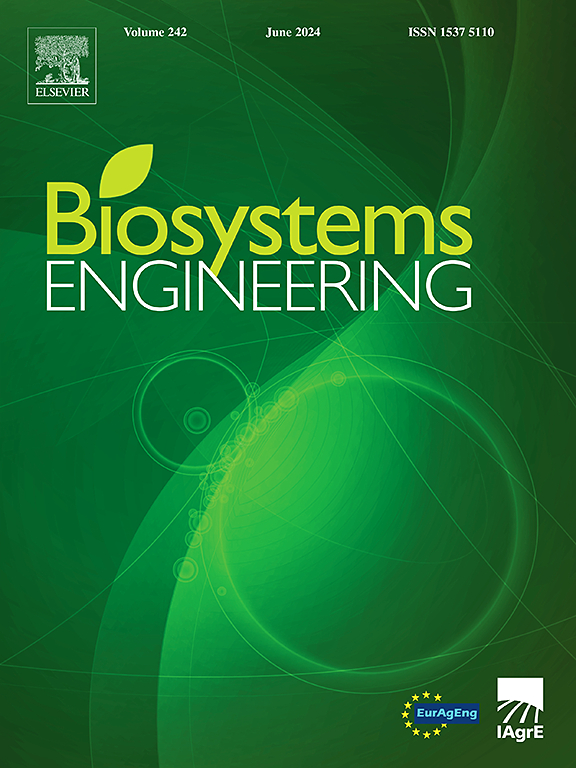Modelling and strip application validation of granulated straw based on DEM
IF 5.3
1区 农林科学
Q1 AGRICULTURAL ENGINEERING
引用次数: 0
Abstract
Granulating surface straw and returning it to the field in conservation tillage can prevent straw blockage, effectively improve sowing quality, and enhance soil fertility. However, straw modelling methods must be updated for accuracy to guide the optimal engineering of mechanised strip applications. This study elucidates granulated straw's particle size and length distribution through mathematical statistical analysis. The differential in tangential and normal compression loads is ascertained via uniaxial compression, three-point bending, and shear examinations. The contact parameters amongst straw particles are calibrated using the cylinder lifting technique. A novel approach is introduced for constructing and calibrating an anisotropic bidirectional bonding model tailored explicitly for materials exhibiting significant discrepancies in tangential and normal load. Utilising the Box-Behnken test design, mathematical models correlating bonding parameters with tangential and normal loads are developed. The study further investigates the effects of variations in interaction parameters on the assessment of the load, culminating in the identification of an optimal set of bonding parameters. Simulation outcomes from uniaxial compression and three-point bending tests revealed deviations from actual target values by 5.9 % and 2.4 %, respectively, with consistent deformation patterns observed. During the validation phase of mechanised straw-breaking strip application, the average discrepancy of test outcomes is recorded at 8.6 %, affirmatively simulating the roller device's field mechanised straw-breaking strip application process. This research offers technical backing for the swift establishment of anisotropic material models and the optimisation design of key components of agricultural machinery.
基于DEM的粒状秸秆建模及条形应用验证
保护性耕作将地表秸秆造粒还田,可防止秸秆堵塞,有效提高播种质量,提高土壤肥力。然而,秸秆建模方法必须更新的准确性,以指导机械带材应用的优化工程。本研究通过数理统计分析阐明了颗粒化秸秆的粒度和长度分布。切向和正常压缩载荷的差异是通过单轴压缩,三点弯曲和剪切检查确定的。秸秆颗粒之间的接触参数采用气缸提升技术进行校准。介绍了一种新的方法来构建和校准一个各向异性双向键合模型,该模型是专门为具有切向和法向载荷显著差异的材料量身定制的。利用Box-Behnken试验设计,开发了连接参数与切向和法向载荷相关的数学模型。该研究进一步研究了相互作用参数变化对载荷评估的影响,最终确定了一组最佳粘合参数。单轴压缩和三点弯曲试验的模拟结果显示,与实际目标值的偏差分别为5.9%和2.4%,观察到一致的变形模式。在机械化断条应用的验证阶段,试验结果的平均偏差记录为8.6%,肯定地模拟了辊式装置的现场机械化断条应用过程。本研究为农业机械各向异性材料模型的快速建立和关键部件的优化设计提供了技术支持。
本文章由计算机程序翻译,如有差异,请以英文原文为准。
求助全文
约1分钟内获得全文
求助全文
来源期刊

Biosystems Engineering
农林科学-农业工程
CiteScore
10.60
自引率
7.80%
发文量
239
审稿时长
53 days
期刊介绍:
Biosystems Engineering publishes research in engineering and the physical sciences that represent advances in understanding or modelling of the performance of biological systems for sustainable developments in land use and the environment, agriculture and amenity, bioproduction processes and the food chain. The subject matter of the journal reflects the wide range and interdisciplinary nature of research in engineering for biological systems.
 求助内容:
求助内容: 应助结果提醒方式:
应助结果提醒方式:


